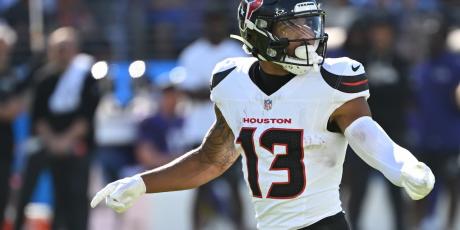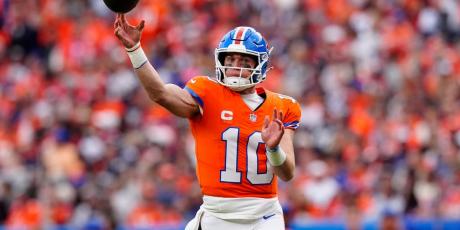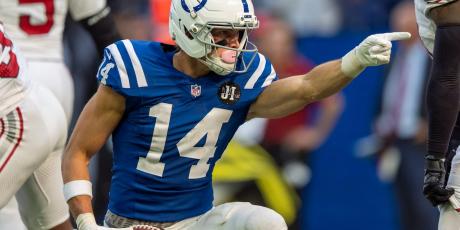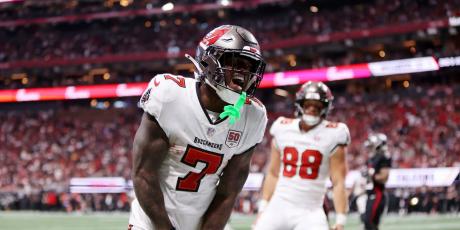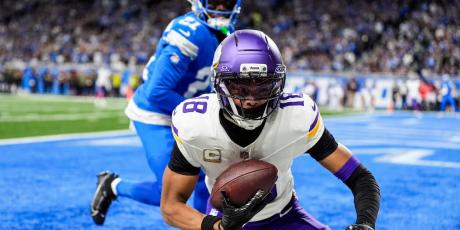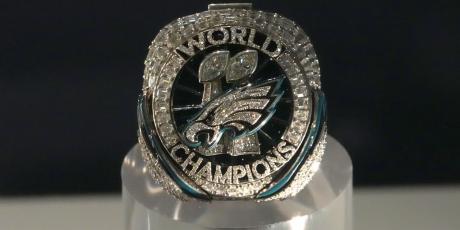4 Fantasy Football Tips You Won't Hear Everywhere Else
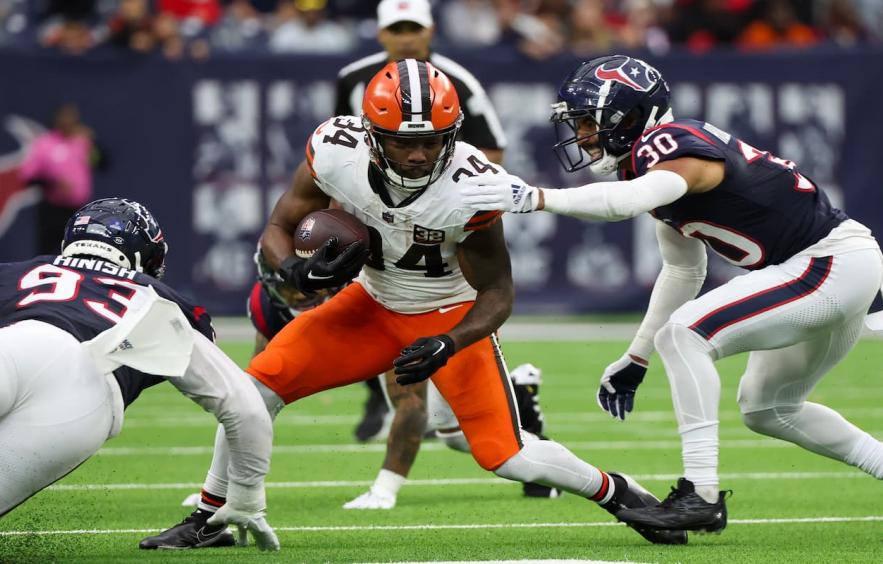
Back in the old days, we received our fantasy news once a day from a TV or radio broadcast and gathered our tips and tricks from a magazine that came out in July and never saw a useful update. Those days are gone. Now we get news the second it happens and our advice from one of eight gazillion articles or podcasts published all the way up to draft day. As a result, there's far less that we don't "know" heading into the season.
But we dig deep here at 4for4 ... so I've mined up four nuggets of wisdom that you won't get everywhere else. Whether spin-offs of more popular advice or outright sleeper tips, these are less mainstream concepts that can (and will) help you win your leagues.
Optimize the value of slow starters (particularly rookies) with early-year fill-ins
Back in 2015, the St. Louis Rams selected running back Todd Gurley 10th overall, despite the torn ACL he had suffered just five months prior. They eased Gurley into the lineup, sitting him for Weeks 1-2 and giving him just 14 snaps in Week 3 ... before feeding him 248 opportunities the rest of the year. He ended up finishing as the RB7 after being drafted around RB27. Now imagine if you paired Gurley with a solid low-cost back to fill in the gap ... someone like Danny Woodhead (RB40 in ADP), who saw 41 opportunities over those three games. Woodhead's first three weeks plus Gurley's next 12 weeks would have given you 244.5 fantasy points over the full fantasy season -- good for RB2 overall.
What's the point of this trip down memory lane? To highlight the value of pairing a slow starter -- whether a rookie, recovering from injury, or both -- with an inexpensive short-term stop-gap. My personal favorite combo in 2024 is running back Jonathon Brooks (second-round rookie recovering from a torn ACL, ADP of RB28) with Jerome Ford (ADP of RB39). The situation is an uncanny mirror for the Gurley-Woodhead one, with Brooks and Gurley on almost the exact same recovery timeline and nearly identical ADPs for the two pairs. If the Panthers ease Brooks into action, you can confidently play Ford the first five weeks of the season, as the presumptive starter in Cleveland with Nick Chubb out a couple of months.
Some other solid combos worth considering include:
- RBs Jaylen Warren, Nick Chubb, and J.K. Dobbins (all dealing with/coming off injury) with ...
- Najee Harris (picking up Warren's slack)
- Austin Ekeler (undervalued after an injury-marred year)
- Gus Edwards (real threat for 20+ touches per game)
- Ezekiel Elliott (goal-line back for one of the league's best offenses)
- WRs Malik Nabers, Ladd McConkey, Brian Thomas Jr. (rookies that may need a minute) with ...
- Rashee Rice (existing rapport with Patrick Mahomes, Hollywood Brown hurt, Xavier Worthy a rookie, not yet suspended)
- Diontae Johnson (perennially underrated target-hog)
- Khalil Shakir (existing rapport with Josh Allen, and Curtis Samuel hurt)
- Tyler Lockett (could fade over the year with age, but a strong start is possible)
- Joshua Palmer (existing rapport with Justin Herbert, could be the top target while McConkey acclimates)
- TEs T.J. Hockenson (injury), Brock Bowers (rookie) with ...
- Jonnu Smith (John Paulsen's favorite sleeper)
- Pat Freiermuth (my favorite sleeper)
- Taysom Hill (where eligible, he's a legitimate TE1)
- QBs Jayden Daniels, Caleb Williams (rookies) OR Kirk Cousins, Aaron Rodgers (injuries) with ...
- Jared Goff (great home/indoor starting schedule)
- Tua Tagovailoa (reportedly improving and unlocked)
- Deshaun Watson (good for 14-15 points a week)
The "stacks" phenomenon can be a trap in typical season-long leagues
You may have heard (or even asked) the question: "Should I draft this player if I already have his teammate on my roster?" And now with the rise of best-ball popularity, you may be familiar with the concept of "stacking." But for those who aren't, or who are eager to apply the concept to season-long, set-a-lineup leagues, here's what you need to know.
"Stacking" a quarterback and pass-catcher from the same team is consensus wisdom in best-ball formats (as well as DFS tournaments) due to the value of weekly upside. When one hits big, it's more likely both hit big, raising your potential ceiling -- which is all that matters in these formats. But in typical season-long leagues, you are playing against one opponent weekly and need equal parts consistency and upside to win. In these leagues, stacking can be a trap.
For one, it creates pressure to shun ADP to "secure" your stack, which can lead to poorer value on a pick-by-pick basis. If you are taking a quarterback in front of three or four others you have ranked higher just because you have his WR1, you're theoretically sending points down the proverbial drain. If you pass on a tier-three running back because your quarterback's tier-four tight end is on the board -- even though he's 15 spots lower in overall ADP -- you're setting yourself up for post-draft regret.
In leagues where you're setting a weekly lineup, starting a stack also subjects you to the downswings of their bad games. Let's use Tua Tagovalioa and Tyreek Hill -- one of last year's best stacks -- as an example. Simply splitting by Dolphins wins and losses, the duo combined for 43.2 fantasy points per game in wins but just 23.7 points per game in losses. They combined for 40+ points in seven of 16 games together (44%), but they also combined for fewer than 26 in six games (38%) ... including a disappointing 25.5 in fantasy championship week. Here's a look at how stacking Tyreek with Tagovailoa measured up against other comparable QBs.
| 0-25 points | 26-40 points | 41+ points | |
|---|---|---|---|
| w/ Tua Tagovailoa | 38% | 19% | 44% |
| w/ Sam Howell | 20% | 40% | 40% |
| w/ Baker Mayfield | 7% | 80% | 13% |
| w/ Joshua Dobbs | 17% | 58% | 25% |
| w/ Geno Smith | 14% | 64% | 21% |
Obviously, this is only one example, but it illustrates the reality well. Stacking with Tagovailoa offered the most "upside weeks," but also returned the most "dud weeks."
Additionally, if you draft a stack and a crucial half of it gets hurt, you may be stuck with a "double bust" as a result. A good example from last year would be Joe Burrow and Ja'Marr Chase, both drafted top-five at their positions. With Burrow's injury-marred season, not only did he finish as the QB26 in points per game, but Chase dropped to WR13. As such, in my book, the best scenario for season-long stacking is when you're taking a later-round shot on both players, thereby avoiding the danger of double-busting with two of your top picks. Value stacks like Jordan Love-Christian Watson or Jayden Daniels-Terry McLaurin come to mind.
All this said I wouldn't recommend actively avoiding the higher-tier stacks if they fall to you naturally in drafts. If you take Marvin Harrison Jr. or Trey McBride in the first few rounds, I still love Kyler Murray in the sixth. If you take A.J. Brown in the late first, I wouldn't blindly pass on Jalen Hurts in the late third. Just don't reach to complete them, understand that they are a risk-reward strategy, and adjust accordingly.
Prior to the season, "strength of schedule" is useful for ... basically nothing
Whoa. This is a little strong, no?
Maybe. But it's also just reality. Let's take a look at some data. I ran the numbers on year-to-year NFL team rank in points allowed to the running back position over the last five seasons and measured the correlation from one year to the next. There ended up being a weak to moderate positive correlation between the two -- that is, if a team ranks high or low one year, there is some correlation in their rank the following year (similarly high or low), but it is not particularly significant.
Of the 20 teams to finish top five (toughest defenses) in 2019, 2020, 2021, and 2022, just seven of them (35%) finished top-five the following year. Three of them finished outside the top 20 and the 2022 Commanders went from fourth-toughest in 2022 to fourth-easiest in 2023. Oddly enough, the Commanders also went from third-easiest in 2019 to second-toughest in 2020, so they apparently can't get their identity sorted. Other notable year-to-year swaps include the Titans, who went from seventh-easiest in 2020 to toughest overall in 2021, and the Cardinals, who went from sixth-toughest in 2021 to third-easiest in 2022.
This sort of weakly correlated inconsistency is visible across every position and every year. The NFL changes too rapidly and too drastically to put all that much stock in last year's "opponent toughness." Attempting to use that data to sway your projections or draft decisions is even hairier. Plus, most players face most teams just once (outside of divisional opponents of course), so you have to accurately predict the outlook for a dozen-plus teams to trust any sort of schedule-based adjustments. Even looking across full divisions is a risky proposition -- the NFC West allowed the fewest fantasy points to running backs in 2022 ... and then the most in 2023. And worst of all, some will advise heavily weighing "fantasy playoff schedule" during your draft -- you know, that window in December when teams have gone through not only the full cycle of off-season changes but also four months of in-season adjustments, personnel changes, etc. Count me out.
Suffice it to say, I'm not using "strength of schedule" to inform hardly any of my draft choices. If I'm looking to stream quarterback early in the season, I'll take a gander at the first month's opponents (looking at you, Jared Goff), but beyond that, I'm more or less ignoring all those red and green numbers in my fantasy app until Week 2. You should too.
You're very unlikely to win your league at the draft (and only slightly more likely to lose it)
In late August, when regular season NFL football is so close and yet so far, it's hard not to ratchet the excitement up to eleven, overreact, and hinge all of our season's expectations on the results of a 15-to-20-pick fantasy draft. Spoiler alert. The season has just begun. The team that wins the championship (ideally yours) will not look anything like it did on September 5th.
I'll give you a quick personal review. Last year, in my main redraft league, I left the draft with T.J. Hockenson, DeAndre Hopkins, and Cam Akers in my starting lineup. By the end of the year (when I won the championship), none of those three were even on my roster. Of the 12 picks I made after round three, only three were still on my team (one of which was Raheem Mostert, shoutout me). In the championship matchup, undrafted waiver pickups Puka Nacua and Jerome Ford combined for 43.55 fantasy points to solidify the win.
Every once in a while, you'll pull off a miracle in the draft -- getting Mostert in the 11th round certainly helped me into the playoffs. But for the most part, you're going to have to scratch and claw through 17 weeks of the fantasy season to reach the ultimate goal. (Bonus tip: subscribe to 4for4, use promo code TOUCHDOWN to save 25%, and allow us to help you with the scratching and the clawing).
And, as I mentioned at the top, it is slightly more likely you lose your league at the draft ... if you completely bungle your first few picks. In my aforementioned draft, my first three picks were Derrick Henry, Amon-Ra St. Brown, and Lamar Jackson. All three were solid returns on investment, none busted, and they remained the core of my team through the entire season. Had I instead started Tony Pollard, Najee Harris, and Tee Higgins (a realistic start, as odd as it sounds now), I likely would never have recovered. The takeaway here? The top of the draft isn't necessarily the time for heroics, untoward creativity, or risk-taking -- everyone has upside, so take the guys who also offer stability and security. This is one reason why, for 2024, I prefer Amon-Ra St. Brown, Ja'Marr Chase, A.J. Brown, and both Breece Hall and Bijan Robinson over Justin Jefferson.
In the end, the draft is a blast, and you should enjoy lording your A+ grade over your leaguemate's C- as vehemently as possible. Just don't rest on your laurels or grow complacent. The real work is still ahead.


